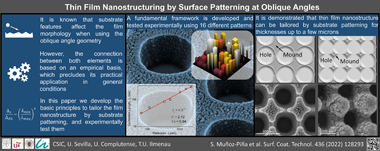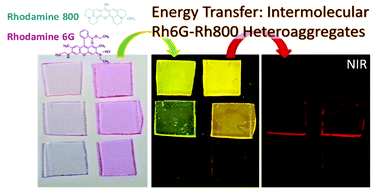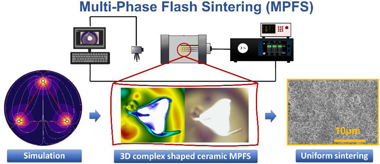Artículos SCI
2022
2022
Composition and technological features of ceramics manufactured by Benito de Valladares in the seventeenth century from the Alcazar Palace in Seville, Spain
Pérez-Rodríguez, J.L.; Robador, M.D.; Duran, A.European Physical Journal Plus, 137 (2022) 469
Show abstract ▽
The walls of the Alcazar Palace in Seville have been covered with ceramic tiles of different styles that were manufactured with different techniques. Several studies have been carried out on these ceramics, but no interest has been paid to the tiles manufactured by the workshop of the Valladares family, one of the most productive ceramic workshops in Triana (Seville). In this work, tiles that were made in the Valladares workshop are studied for the first time. The tiles from the Cenador del Leon built in 1645-1646 were chosen. The experimental studies suggest that the ceramic body was manufactured with silico-calcareous clay. This raw material was heated to a temperature of ca. 900 degrees C. A nondestructive and on-site analytical procedure was applied first. Microsamples were also taken and studied through microanalytical techniques. The maiolica style was used by Benito de Valladares for tile manufacture. The glaze phases were constituted by two layers. The pigments and doping elements used to obtain different colors were characterized. Valladares' work is considered as a continuation of Augusta's work; therefore, a comparison between both ceramists has been realized to better understand the ceramics production in southern Spain during the sixteenth to seventeenth centuries.
Abril, 2022 | DOI: 10.1140/epjp/s13360-022-02669-9
Nanotecnología en Superficies y Plasma
Thin film nanostructuring at oblique angles by substrate patterning
Muñoz-Pina, S; Alcaide, AM; Limones-Ahijon, B; Oliva-Ramirez, M; Rico, V; Alcala, G; Gonzalez, MU; García-Martín, JM; Alvarez, R; Wang, D; Schaaf, P; Gonzalez-Elipe, AR; Palmero, ASurface & Coatings Technology, 436 (2022) 128293
Show abstract ▽

It is demonstrated that, besides classical nanocolumnar arrays, the oblique angle geometry induces the growth of singular structures in the nanoscale when using wisely designed patterned substrates. Well-ordered array of crosses, cylindrical nanorods or hole structures arranged in square or hexagonal regular geometries are reported as examples, among others. The fundamental framework connecting substrate topography and film growth at oblique angles is presented, allowing the use of substrate patterning as a feasible thin film nanostructuring technique. A systematic analysis of the growth of TiO2 thin films on 4 different lithographic patterned substrates in 4 different scale lengths is also presented. A first conclusion is the existence of a height-based selective growth in the initial stages of the deposition, by which the film preferentially develops on top of the tallest substrate features. This behavior is maintained until the film reaches a critical thickness, the so-called Oblivion Thickness, above which the film topography becomes gradually independent of the substrate features. A general formula relating the spatial features of the pattern, the coarsening exponent and the Oblivion Thickness has been deduced.
Abril, 2022 | DOI: 10.1016/j.surfcoat.2022.128293
Reactividad de Sólidos
Ageing-resistant zirconia/graphene-based nanostructures composites for use as biomaterials
Morales-Rodriguez, A; Gonzalez-Orellana, C; Perez-Garcia, AA; Lopez-Pernia, C; Munoz-Ferreiro, C; Poyato, R; Gallardo-Lopez, AJournal of the European Ceramic Society, 42 (2022) 1784-1795
Show abstract ▽
This work explores the incorporation of graphene-based two-dimensional nanostructures as moisture barriers to delay hydrothermal ageing of yttria-stabilized zirconia and strengthen its use in biomedical applications. Two sets of highly dense zirconia composites incorporating multilayered graphene with very different lateral dimensions, few layer graphene and exfoliated graphene nanoplatelets, were prepared. The effect of the addition of graphene nanostructures on zirconia ageing was investigated by conducting accelerated hydrothermal degradation experiments in an autoclave. An improved resistance to low-temperature degradation and a high tolerance to damage were achieved in the composites compared to those of monolithic zirconia. The incorporation of 1 vol% multilayered graphene was very effective in restricting the hydrothermal degradation. In particular, the composite incorporating exfoliated graphene nanosheets exhibited outstanding resistance to ageing because of their fine dispersion throughout the matrix, which effectively seemed to restrict grain growth and slow the propagation of the transformation front to the ceramic bulk.
Abril, 2022 | DOI: 10.1016/j.jeurceramsoc.2021.11.060
Nanotecnología en Superficies y Plasma
Rhodamine 6G and 800 intermolecular heteroaggregates embedded in PMMA for near-infrared wavelength shifting
Castillo-Seoane, J; Gonzalez-García, L; Obrero-Pérez, JM; Aparicio, FJ; Borras, A; Gonzalez-Elipe, AR; Barranco, A; Sanchez-Valencia, JRJournal of Materials Chemistry C, 10 (2022) 7119-7131
Show abstract ▽

The opto-electronic properties of small-molecules and functional dyes usually differ when incorporated into solid matrices with respect to their isolated form due to an aggregation phenomenon that alters their optical and fluorescent properties. These spectroscopic modifications are studied in the framework of the exciton theory of aggregates, which has been extensively applied in the literature for the study of molecular aggregates of the same type of molecules (homoaggregation). Despite the demonstrated potential of the control of the heteroaggregation process (aggregation of different types of molecules), most of the reported works are devoted to intramolecular aggregates, complex molecules formed by several chromophores attached by organic linkers. The intramolecular aggregates are specifically designed to hold a certain molecular structure that, on the basis of the exciton theory, modifies their optical and fluorescent properties with respect to the isolated chromophores that form the molecule. The present article describes in detail the incorporation of Rhodamine 6G (Rh6G) and 800 (Rh800) into polymeric matrices of poly-(methyl methacrylate), PMMA. The simultaneous incorporation of both dyes results in an enhanced fluorescent emission in the near-infrared (NIR), originating from the formation of ground-state Rh6G-Rh800 intermolecular heteroaggregates. The systematic control of the concentration of both rhodamines provides a model system for the elucidation of the heteroaggregate formation. The efficient energy transfer between Rh6G and Rh800 molecules can be used as wavelength shifters to convert effectively the light from visible to NIR, a very convenient wavelength range for many practical applications which make use of inexpensive commercial detectors and systems.
Marzo, 2022 | DOI: 10.1039/d1tc06167d
Reactividad de Sólidos
A novel Multi-Phase Flash Sintering (MPFS) technique for 3D complex-shaped ceramics
Molina-Molina, S; Gil-Gonzalez, E; Duran-Olivencia, FJ; Valverde, JM; Perejon, A; Sanchez-Jimenez, PE; Pérez-Maqueda, LAApplied Materials Today, 26 (2022) 101274
Show abstract ▽

This work demonstrates the first proof-of-concept of Multi-Phase Flash Sintering (MPFS). This novel technique essentially consists of applying a rotating electric field to the sample by means of a multi-phase voltage source as furnace temperature increases. Several ceramic materials with different types of electrical conductivities are sintered within seconds at furnace temperatures much lower than those used for traditional DC flash sintering due to the higher power densities administered by a multi-phase power supply. Thus, ceramic materials are flashed at relatively lower applied voltages which minimizes undesired phenomena such as localization and preferential current pathways. Furthermore, MPFS allows diverse electrode configurations to promote a more uniform electric field distribution, enhancing the sintering of 3D complex-shaped specimens. MPFS could be a true breakthrough in materials processing, as 3D complex-shaped specimens are homogeneously sintered at reduced temperatures, while keeping all the advantages of conventional flash sintering.
Marzo, 2022 | DOI: 10.1016/j.apmt.2021.101274
- ‹ anterior
- 55 of 410
- siguiente ›














